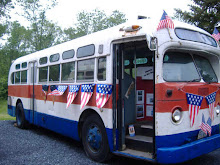
Here is a 1934 White Model 65A - and a little history of the company:
The White Sewing Machine Company, as it was originally called, introduced a steam automobile in 1900 and changed its name to the White Motor Car Company. Their last steam-engined vehicle was manufactured in 1910 and in 1912 they introduced a line of ambulances in association with their Ravenna, Ohio neighbor, the Riddle Coach & Hearse Company. Unlike their Riddle cousins, the White ambulance's coachwork was plain and utilitarian, and looked more like a delivery van than the beautiful coaches built by Riddle. All ambulances featured White's big 60hp six chassis which featured a wheelbase of 140". The bodies were supplied by Riddle and sold through the White dealer network until 1916, when White discontinued the 140" chassis.
Riddle-bodied Ambulances and Funeral Vehicles were produced and sold by White in a large number of styles from 1912-1914. The heavy duty 140" White was a popular chassis with other coachbuilders as well. G.A. Schnabel, National Casket Company, Pete Kief, and Hornthals were all satisfied customers during the early-to-mid teens.
The White Truck enjoyed much more success than the White automobile and just prior to WWI, the firm decided to concentrate on trucks. Automobile production ceased at the end of 1918 and White became one the largest Truck producers in the world. They manufactured the Standard Class "A" Truck for the U.S. Army during World War I. Trucks bearing the White name were being manufactured up until 1995, when their current owner Volvo decided to drop the White name.
White made no precedent-setting strides in bus design, their vehicles selling on durability and consistent performance. The company's first series-production 6-cylinder commercial vehicle was the Model-54 bus of 1926: a 4-cylinder type with similar styling carried the Model-53 designation. In 1928 the company built an experimental gasoline-electric bus, which combined the big 6-cylinder engine with two rear-mounted G.E.C. electric motors.

No comments:
Post a Comment